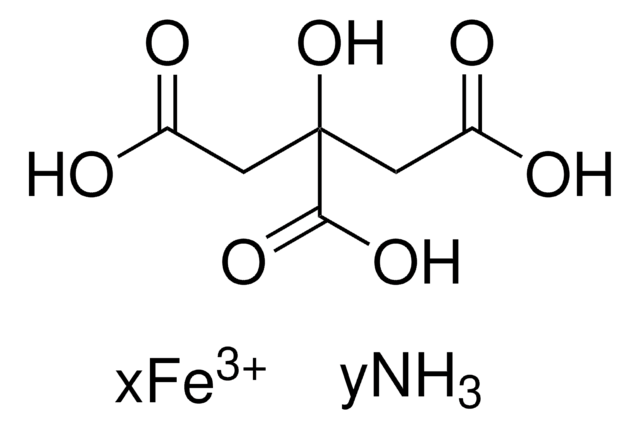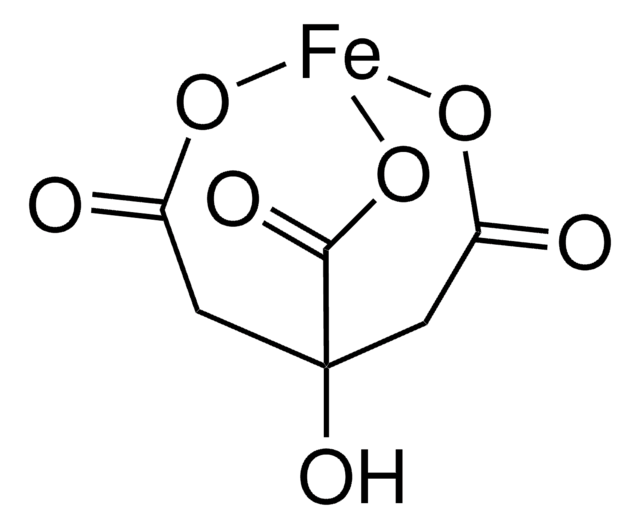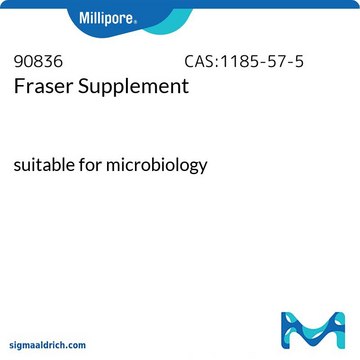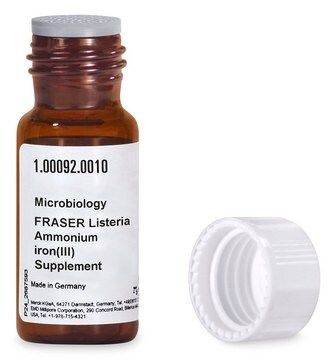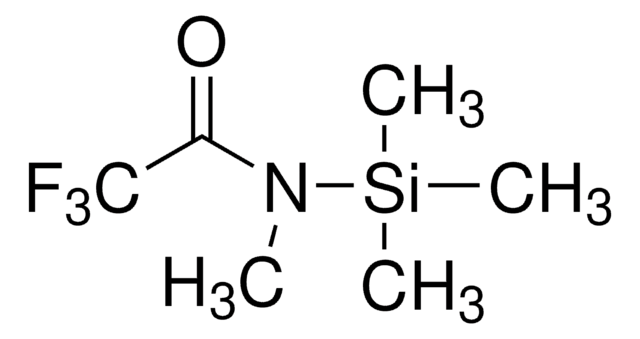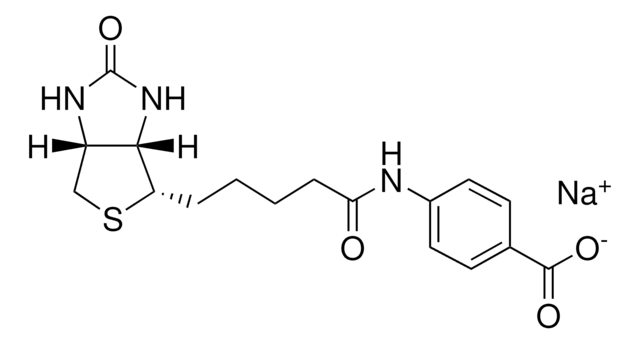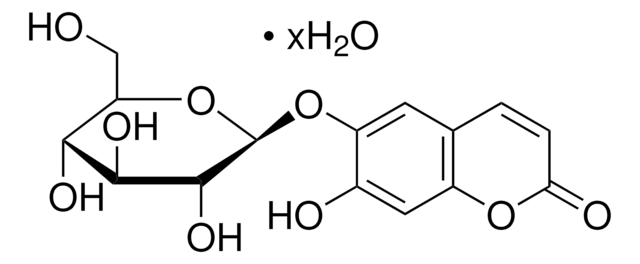F5879
Ammonium iron(III) citrate
reagent grade, powder
Synonym(s):
Ammonium ferric citrate, Ferric ammonium citrate
Sign Into View Organizational & Contract Pricing
All Photos(3)
About This Item
Recommended Products
grade
reagent grade
Quality Level
form
powder
composition
Iron, 16.5-18.5%
cation traces
Fe: 16.5-18.5%
SMILES string
N.OC12CC(=O)O[Fe](OC(=O)C1)OC(=O)C2
InChI
1S/C6H8O7.Fe.H3N/c7-3(8)1-6(13,5(11)12)2-4(9)10;;/h13H,1-2H2,(H,7,8)(H,9,10)(H,11,12);;1H3/q;+3;/p-3
InChI key
FRHBOQMZUOWXQL-UHFFFAOYSA-K
Looking for similar products? Visit Product Comparison Guide
General description
Ammonium iron(III)citrate can be used as a reagent and iron precursor in several organic reactions and Fe3O4-based nanomaterial preparation. It can be prepared by treating Fe(OH)3 with citric acid and NH4OH in various ratios.
Application
Ammonium iron(III) citrate can be used as a reagent to prepare amphiphilic siderophore iron acinetoferrin complex from acinetoferrin in the presence of HEPES (4-(2-hydroxyethyl)-1-piperazineethanesulfonic acid) buffer. It can also be used as an iron precursor to prepare Fe3O4-carbon dots magnetic-fluorescent hybrid nanoparticles.
Storage Class Code
11 - Combustible Solids
WGK
WGK 1
Flash Point(F)
Not applicable
Flash Point(C)
Not applicable
Choose from one of the most recent versions:
Already Own This Product?
Find documentation for the products that you have recently purchased in the Document Library.
Customers Also Viewed
Pengfei Wang et al.
Science advances, 5(4), eaau8038-eaau8038 (2019-04-17)
The in situ measurement of the distribution of biomolecules inside a cell is one of the important goals in life science. Among various imaging techniques, magnetic imaging (MI) based on the nitrogen-vacancy (NV) center in diamond provides a powerful tool
Sant-Rayn Pasricha et al.
Nature communications, 8(1), 403-403 (2017-09-03)
Hepcidin regulates systemic iron homeostasis. Suppression of hepcidin expression occurs physiologically in iron deficiency and increased erythropoiesis but is pathologic in thalassemia and hemochromatosis. Here we show that epigenetic events govern hepcidin expression. Erythropoiesis and iron deficiency suppress hepcidin via
Yinghui Zhang et al.
Antioxidants & redox signaling, 13(7), 999-1009 (2010-04-22)
Cytosolic ferritins sequester and store iron, consequently protecting cells against iron-mediated free radical damage. However, the mechanisms of iron exit from the ferritin cage and reutilization are largely unknown. In a previous study, we found that mitochondrial ferritin (MtFt) expression
Rita Polati et al.
Journal of proteomics, 76 Spec No., 10-27 (2012-07-28)
Macrophages play a critical role at the crossroad between iron metabolism and immunity, being able to store and recycle iron derived from the phagocytosis of senescent erythrocytes. The way by which macrophages manage non-heme iron at physiological concentration is still
Yulia Pollak et al.
Journal of neural transmission (Vienna, Austria : 1996), 120(1), 37-48 (2012-03-27)
Iron accumulation and iron-related oxidative stress are involved in several pathological conditions and provide a rationale for the development of iron chelators as novel promising therapeutic strategies. Thus, we have recently synthesized multifunctional non-toxic, brain permeable iron chelating compounds, M30
Our team of scientists has experience in all areas of research including Life Science, Material Science, Chemical Synthesis, Chromatography, Analytical and many others.
Contact Technical Service